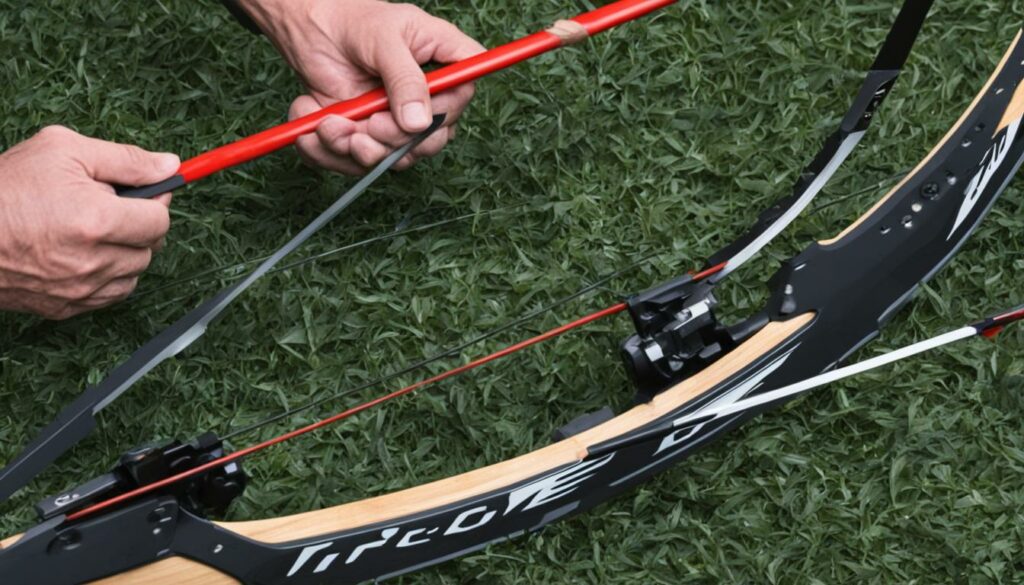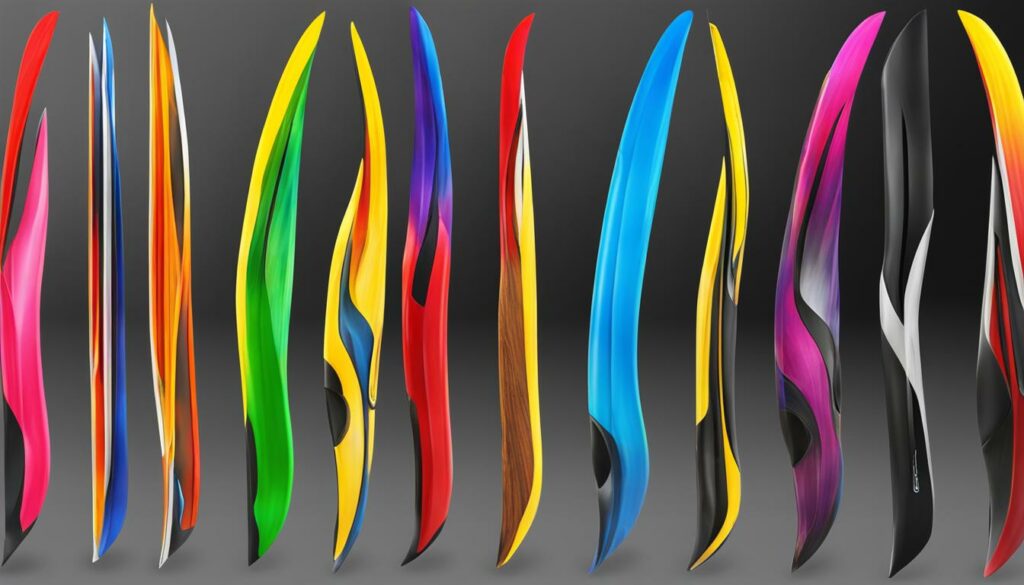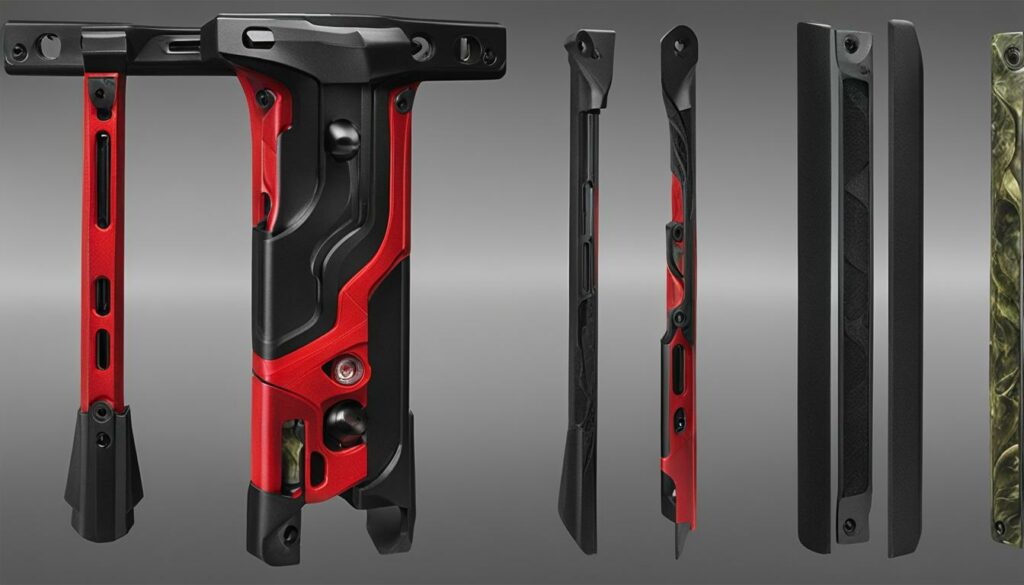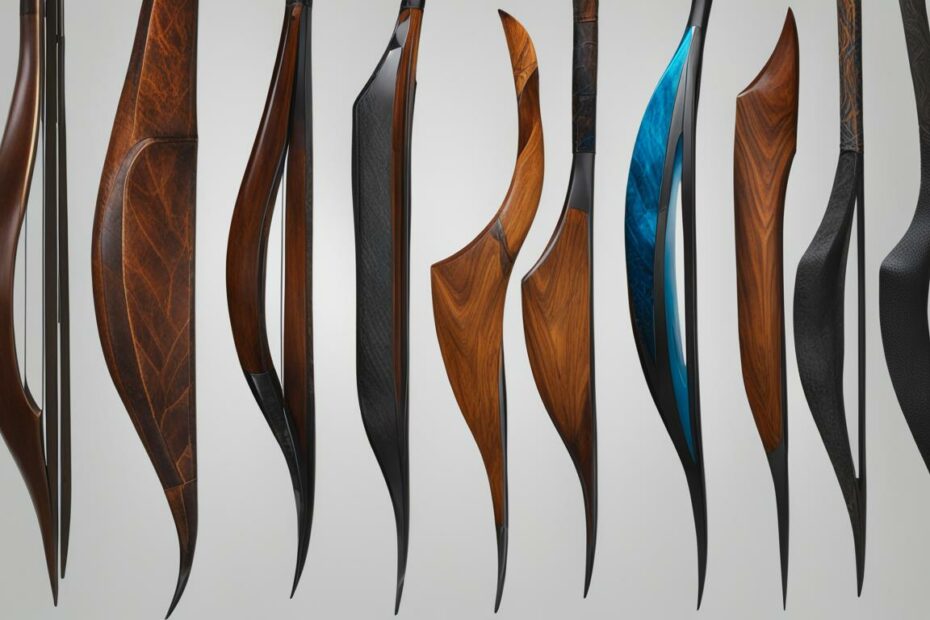Regarding recurve bows, the compatibility of limbs is a crucial consideration. Many archers wonder if recurve bow limbs are interchangeable, and the answer is not always straightforward. The limbs of a recurve bow play a significant role in its performance and draw weight, making it essential to understand their compatibility.
In general, the lower limb of a recurve bow is slightly heavier to balance out the bow when drawn. While some manufacturers now produce limbs with practically the same weight, they are still specifically labeled as “top” and “bottom.”
Therefore, it is essential to pay attention to limb orientation. However, certain types of limbs, such as ILF (International Limb Fitting) limbs, offer compatibility with ILF risers and can be mixed and matched regardless of the brand.
How to Swap Recurve Bow Limbs
To swap limbs on a recurve bow, having limbs compatible with the riser is crucial. To do this, you need to ensure that your limbs match the limb pocket of the riser and that they are the correct length for the bow.
If you have ILF limbs, they can be easily attached and detached by inserting them into the ILF riser until you hear a click. ILF (International Limb Fitting) limbs are compatible with ILF risers and can be mixed and matched regardless of brand. This interchangeability provides archers with a wide range of limb options.
On the other hand, if you have screw-in limbs, the process may be slightly different. You will need to use a limb bolt to secure them in place. Following the manufacturer’s recommendations and guidelines when swapping limbs is essential to ensure proper compatibility and functionality.
Choosing Compatible Limbs for Recurve Bows
When selecting limbs for your recurve bow, it is essential to consider their compatibility with the riser. Check if the limbs match the limb pocket of the riser, as this ensures a secure fit. Additionally, ensure the limbs are the correct length for your specific bow model, as proper limb length is crucial for optimal performance.
Before purchasing new limbs, it is always recommended to consult with an archery professional or refer to the manufacturer’s guidelines. They can provide valuable insights and recommendations based on your archery needs and preferences.
Choosing compatible limbs for your recurve bow ensures a proper fit and enhances your shooting experience by optimizing the bow’s performance.
Whether you prefer ILF limbs for their versatility or proprietary limbs designed specifically for your riser model, understanding limb compatibility is key to unlocking the full potential of your recurve bow.
Recurve Bow Limb Replacement
There may come a time when you find it necessary to replace the limbs of your recurve bow. Whether it’s due to limb damage, wear and tear, or simply a desire to upgrade to higher-quality limbs, the process of limb replacement is essential.
When replacing limbs, it’s crucial to consider the specific limb specifications, including length, weight, and compatibility with the riser. To ensure a successful limb replacement, it’s highly recommended to consult with a knowledgeable archery professional who can assist you in selecting the right limbs for your specific needs and preferences.
Recurve bow limb replacement offers various benefits. It allows you to repair your bow if the limbs have experienced any damage or deterioration over time. Additionally, it provides an opportunity to customize and enhance the performance of your bow by upgrading to limbs that offer improved speed, accuracy, and stability.
Whether you’re a beginner looking to experiment with different limb options or an experienced archer seeking to optimize your equipment, replacing the limbs of your recurve bow can be a valuable investment in your archery journey.
When considering a limb upgrade, it’s essential to understand the compatibility between the new limbs and your recurve bow’s riser. Different manufacturers may have specific limb options that work seamlessly with their riser models.
Additionally, the length and weight of the limbs should be compatible with your bow’s draw weight and length to ensure optimal performance and safety. Considering these factors will help you make an informed decision when selecting new limbs for your recurve bow.
Explore the available limb options and consider factors such as material composition, limb design, and user reviews to determine the best fit for your shooting style and performance goals.
Remember that proper limb replacement requires careful consideration and expert guidance. Consult with a qualified archery professional to ensure compatibility and maximize the potential of your newly replaced recurve bow limbs.

Compatible Limb Options for Recurve Bows
One of the most versatile and widely available options is ILF (International Limb Fitting) limbs. ILF limbs are designed to be interchangeable and can be mixed and matched regardless of the brand, giving archers the flexibility to choose the best combination for their needs.
The appeal of ILF limbs lies in their compatibility with ILF risers. This universal compatibility allows archers to explore various options from different manufacturers, providing customization opportunities and enhancing the bow’s overall performance.
ILF limbs allow archers to experiment with different draw weights, lengths, and materials, allowing for a truly tailored shooting experience. Whether you prefer wood, carbon fiber, or another material, you can find ILF limbs that suit your shooting style and specific requirements.
However, it’s essential to note that some manufacturers also offer proprietary limb options specifically designed for their riser models. These limbs are fine-tuned to complement the riser’s specific design and characteristics, enhancing the bow’s overall performance and feel.
To help you navigate the world of compatible limb options for recurve bows, the table below provides a comparison of ILF limbs and proprietary limb options from popular manufacturers:
| Limb Type | Interchangeability | Available Brands |
|---|---|---|
| ILF limbs | Interchangeable | Multiple brands |
| Proprietary limbs | Designed for specific riser models | Manufacturer-specific |

As you can see, ILF limbs offer unparalleled compatibility and the broadest range of options, making them popular for many archers. However, if you have a specific riser model in mind, it’s worth exploring the proprietary limb options offered by the manufacturer to optimize the performance of your bow fully.
Ultimately, the decision of compatible limb options for your recurve bow should be based on your shooting style, preferences, and performance goals. Researching and experimenting with different options is crucial to finding the perfect combination that unlocks your full potential in the archery range.
Understanding Recurve Bow Design
To fully grasp the concept of interchangeable limbs for recurve bows, it is essential to understand the basic design of a recurve bow. A recurve bow consists of three main components: the riser, the limbs, and the string.
The riser is the central part of the bow that an archer holds and holds the other pieces together. It is typically made of wood, aluminum, carbon fiber, or a combination of these materials. The riser comprises various parts, including the grip, sight window, arrow rest, limb pocket, stabilizer mount, plunger hole, and sight mount. These parts contribute to the overall functionality and performance of the bow.
The limbs are the long and flexible parts of the bow that store energy when the bow is drawn. They are responsible for generating the power and speed of the arrow.
The limbs can be made of wood, fiberglass, carbon fiber, or a combination of these materials. Each limb has specific parts, such as the tip and bolt, contributing to its functionality and compatibility with the riser.
The string completes the bow and is essential for shooting arrows. It connects the tips of the limbs and forms the tension necessary for propelling the arrow forward. The string can be made of materials such as Dacron, Fast Flight, or Vectran, each offering different characteristics and performance qualities.
| Component | Description |
|---|---|
| Riser | The central part of the bow that an archer holds and holds the other pieces together. It consists of various parts such as the grip, sight window, arrow rest, limb pocket, stabilizer mount, plunger hole, and sight mount. |
| Limbs | The long and flexible parts of the bow that store energy when the bow is drawn. They generate the power and speed of the arrow. |
| String | The component that completes the bow and is essential for shooting arrows. It connects the tips of the limbs and forms the tension necessary for propelling the arrow forward. |
Parts of a Recurve Bow – The Riser
The riser is the central part of a recurve bow and is where the archer holds the bow. It serves as the foundation for the bow’s overall structure. The riser is typically made of various materials, including wood, aluminum, carbon fiber, or a combination of these materials. Each material offers different benefits in strength, weight, and durability.
The riser consists of several essential parts that contribute to the bow’s functionality and performance:
- Grip: The grip is the area of the riser where the archer holds the bow. It provides a comfortable and secure grip for improved control and accuracy.
- Sight Window: The sight window is a cutout on the riser that allows the archer to align their aim with greater precision. It provides a clear line of sight between the archer, the target, and the arrow, facilitating accurate shooting.
- Arrow Rest: The arrow rest is a small platform or ledge on the riser where the archer rests the arrow before releasing it. It helps ensure consistent and stable arrow positioning for reliable shot execution.
- Limb Pocket: The limb pocket is the part of the riser where the limbs attach. It secures the limbs and provides a stable connection between them and the riser.
- Stabilizer Mount: The stabilizer mount is a threaded hole or attachment point on the riser where a stabilizer can be installed. Stabilizers help reduce bow movement and vibration, improving stability and accuracy during the shot.
- Plunger Hole: The plunger hole is a small hole located on the side of the riser. It is used to adjust and fine-tune the archer’s center shot alignment by controlling the lateral movement of the arrow as it leaves the bow.
- Sight Mount: The sight mount is a dedicated attachment point on the riser where a sight can be attached. Sights provide visual reference points for aiming, enhancing accuracy and consistency in targeting.

Parts of a Recurve Bow – The Limbs and String
A recurve bow comprises various components that create a powerful and accurate shooting experience. Two essential parts of a recurve bow are the limbs and the string.
The limbs of a recurve bow are responsible for storing and releasing energy when the bow is drawn. It is important to note that the upper and lower limbs are not interchangeable. The lower limb typically has a slightly heavier draw weight to balance the bow when fully drawn.
Recurve bow limbs can come in different weights and are made of wood, fiberglass, carbon fiber, or a combination of these materials. The limb weight and material choice can significantly impact the bow’s performance.
The string is another crucial component of a recurve bow. It completes the bow and propels the arrow forward upon release. Recurve bow strings are typically made of durable materials such as Dacron, Fast Flight, or Vectran.
The choice of string material can affect the bow’s speed, accuracy, and overall performance. Selecting a string that suits your shooting style and bow specifications is essential.
FAQ
Are recurve bow limbs interchangeable?
Recurve bow limbs are not always interchangeable. While some manufacturers now make the two limbs practically the same weight, they are still specifically labeled ‘top’ and ‘bottom.’
However, certain types of limbs, such as ILF (International Limb Fitting) limbs, are compatible with ILF risers and can be mixed and matched regardless of brand. Understanding the specific limb and riser compatibility is essential before interchanging limbs on a recurve bow.
How do I swap recurve bow limbs?
To swap limbs on a recurve bow, you need to ensure that you have limbs that match the limb pocket of the riser and that they are the correct length for the bow. If you have ILF limbs, they can be easily attached and detached by inserting them into the ILF riser until you hear a click.
However, if you have screw-in limbs, you must use a limb bolt to secure them. Pay attention to the manufacturer’s recommendations and guidelines to ensure compatibility and functionality.
How can I replace the limbs of my recurve bow?
When replacing limbs, it is essential to consider the specific limb specifications, such as length, weight, and compatibility with the riser. Suppose you are unsure about the appropriate replacement limbs for your bow.
In that case, it is recommended to consult with a knowledgeable archery professional who can guide you in selecting the right limbs for your specific needs and preferences.
What are the compatible limb options for recurve bows?
ILF limbs are the most versatile and widely available compatible limb options for recurve bows. ILF limbs can be mixed and matched regardless of brand, giving archers a wide range of options.
Additionally, some manufacturers offer proprietary limb options specifically designed for their riser models, offering unique features and optimized performance characteristics.
How should I understand the design of a recurve bow?
A recurve bow has three main components: the riser, limbs, and string. Understanding the design of a recurve bow is crucial for selecting compatible limbs and ensuring proper functionality.
What are the different parts of a recurve bow riser?
The riser is the central part of a recurve bow and consists of various parts, including the grip, sight window, arrow rest, limb pocket, stabilizer mount, plunger hole, and sight mount. Each part contributes to the overall functionality and performance of the bow.
What are the different parts of recurve bow limbs and the string?
The limbs of a recurve bow are responsible for storing energy when the bow is drawn and comes in different weights. The upper and lower limbs are not interchangeable, as the lower limb often has a slightly heavier draw weight to balance out the bow when drawn. The string completes the bow and is typically made of Dacron, Fast Flight, or Vectran.
